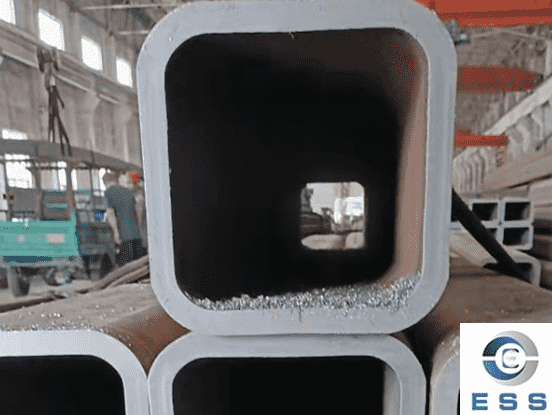Understand the key points for selecting seamless steel pipes
Seamless steel pipe is a steel pipe without welds manufactured by hot processing methods such as perforation and hot rolling. If necessary, the hot-processed pipe can be further cold-processed to the required shape, size and performance.
Commonly used stainless steel seamless steel pipe standards include five standards: GB/T14976 "Stainless Steel Seamless Steel Pipes for Fluid Transport", GB13296 "Stainless Steel Seamless Steel Pipes for Boilers and Heat Exchangers", GB9948, GB6479, and GB5310. Among them, only two or three stainless steel material grades are listed in the latter three standards, and they are not commonly used material grades. Therefore, when selecting stainless steel seamless steel pipe standards for projects, GB/T14976 and GB13296 standards are basically used.

1.Why are 304L and 316L steel widely used?
Ultra-low carbon stainless steel (304L, 316L) has excellent corrosion resistance. Under certain conditions, it can replace stable austenitic stainless steel (321, 347) for resistance to media corrosion; ultra-low carbon stainless steel has better mechanical properties at high temperatures. Low, generally only used when the temperature is lower than 525°C.
Stable austenitic stainless steel has both good corrosion resistance and high high-temperature mechanical properties. However, the Ti in 321 is easily oxidized and lost during the welding process, thus reducing its corrosion resistance and its price is relatively high. High, this type of material is generally used in more important occasions. 304 and 316 have general corrosion resistance and are cheap, so they are widely used.
2. How to choose under different pressures
The higher the pressure of the conveyed medium, the thicker the wall thickness of the pipe, and generally the higher the requirements for pipe materials.
When the medium pressure is above 1.6MPa, seamless steel pipes or non-ferrous metal pipes can be used. When the pressure is very high, such as in the production of synthetic ammonia, urea and methanol, the medium pressure of some pipes is as high as 32MPa. High-pressure seamless steel pipes made of 20# or 15CrMo are generally used. Pipes on vacuum equipment and oxygen pipes when the pressure is greater than 10MPa generally use copper tubes and brass tubes.
When the medium pressure is below 1.6MPa, welded steel pipes, cast iron pipes or non-metallic pipes can be considered. However, the pressure that cast iron pipes bear from the medium shall not exceed 1.0MPa. The medium pressure that non-metallic pipes can withstand is related to the type of non-metallic material. For example, for rigid polyvinyl chloride pipes, the operating pressure is less than or equal to 1.6MPa; for reinforced polypropylene pipes, the operating pressure is less than or equal to 1.0MPa; for ABS pipes, the operating pressure Less than or equal to 0.6MPa.
For water pipes, when the water pressure is below 1.0MPa, welded steel pipes made of Q235A are usually used; when the water pressure is greater than 2.5MPa, 20# seamless steel pipes are generally used.
3. Selection of pipe materials under different chemical properties of media
To transport different media, different pipe materials are used.
Neutral media generally do not have high material requirements, so ordinary carbon steel pipes can be used; for acidic or alkaline media, acid-resistant or alkali-resistant pipes must be selected. Strong acids and strong bases and weak acids and weak bases have different requirements for the use of pipes. The same acid or alkali has different material requirements for pipes with different concentrations.
For transporting water and steam, carbon steel pipes are sufficient. In urea plants, stainless steel pipes are generally used to transport carbon dioxide, because carbon dioxide forms carbonic acid when it meets water, and carbonic acid has a corrosive effect on ordinary steel pipes. Carbon steel pipes can be used for fuming sulfuric acid, but carbon steel pipes cannot be used for dilute sulfuric acid, because dilute sulfuric acid and carbon steel can react chemically and corrode carbon steel, so duralumin pipes can be used.













 Eastern Steel Manufacturing Co.,Ltd not only improve product production and sales services, but also provide additional value-added services. As long as you need, we can complete your specific needs together.
Eastern Steel Manufacturing Co.,Ltd not only improve product production and sales services, but also provide additional value-added services. As long as you need, we can complete your specific needs together.










